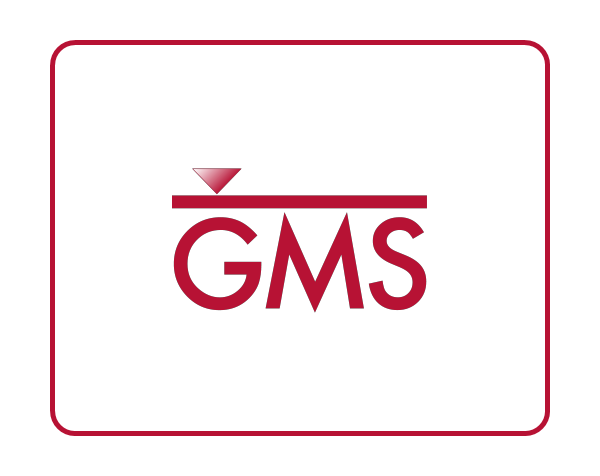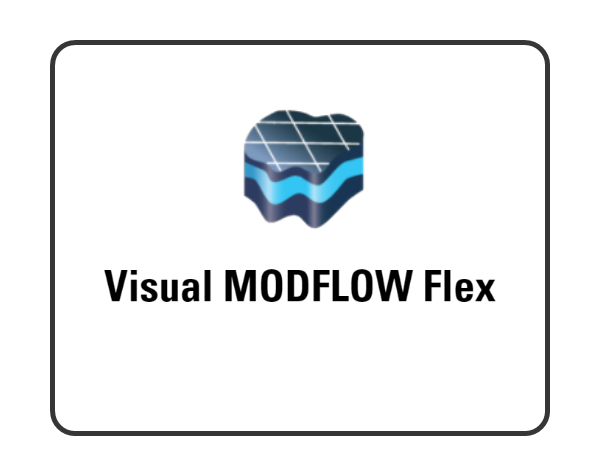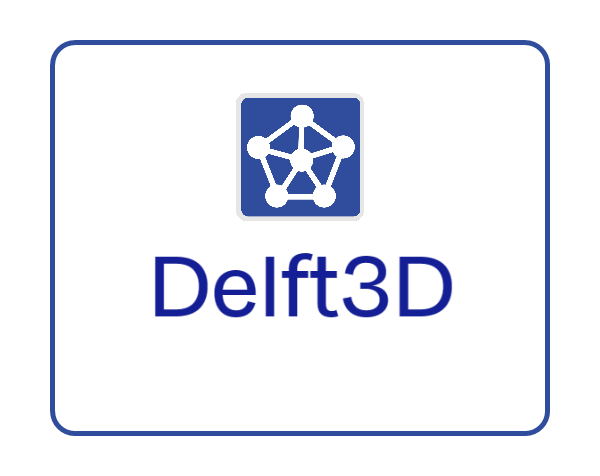FLO-2D - 二维洪水与土石流数值模拟套装软件
· FLO-2D技术论文概览:从海啸波模拟到冲积扇危险区划分的多领域应用
主要功能
求解算法
-
采用完 全动态波动量方程和中 心有限差分法
-
基于8向潜在流方向的方形网格系统进行洪水演进计算
网格系统构建
-
数据需求
-
地形数据:数字地形模型(DTM)点、等高线或测绘数据
-
水文数据:通过预处理程序网格开发系统(GDS)自动生成网格并插值高程
-
典型网格尺寸:3米(10英尺)到 150米(500英尺),网格数量无限制
-
-
背景图像
-
支持导入航拍图像辅助图形编辑(需配套世界文件定位)
-
水量守恒与计算稳定性
-
通过严格的水量守恒控制确保精度(模型实时追踪并报告水量平衡)
-
数值稳定性与水量守恒直接关联,守恒性越好计算速度越快
-
根据漫滩、河道及街道流的稳定性准则动态调整计算时间步长
输入水文过程线与降雨
-
支持任意数量输入节点(河道或漫滩)
-
兼容ASCII格式水文过程线
-
可作为降雨径流模型运行(允许洪水面上叠加降雨)
-
NEXRAD雷达降雨数据应用:
-
通过GDS将NEXRAD网格降雨数据插值到模型网格
-
生成RAINCELL.DAT文件实现时空变降雨模拟
-
需结合雨量站数据校准雷达降雨
-
损失计算
-
下渗:支持Green-Ampt法、SCS曲线数法或Horton法,可组合使用
-
蒸发:分别计算漫滩和河道的水面蒸发损失
河道与漫滩水流交换
-
河道流:一维模拟(支持矩形/梯形/实测断面)
-
漫滩流:8向非约束流动模拟(4主方向+4对角线方向)
-
支持漫滩与河道间每步长的溢流/回流模拟
-
特殊功能:
-
河道可大于网格尺寸
-
支流输入数量无限制
-
GDS支持HEC-RAS断面格式转换
-
街道流与水力构筑物
-
街道流:模拟为带路缘石的浅矩形渠道,支持与漫滩交互
-
水力构筑物:
-
桥梁/涵洞/堰等通过用户定义的流量-水位曲线模拟
-
支持逆向流、非连续网格间的涵洞流(含进出口控制方程)
-
雨水排水系统
-
完 全耦合的地表与地下排水系统模拟
-
组件包括:
-
无限管道系统
-
5种雨水口控制类型
-
可"顶起"的检查井盖
-
基于管道压力与地表水位比较的入流控制
-
多种出水口类型(含水下出水口和止回阀)
-
堤坝/大坝溃决
-
通过指定网格边界顶高程模拟堤防/路堤/大坝
-
溃决选项:
-
9种泥沙输移方程选择的侵蚀模型
-
支持基于脆弱性曲线触发溃决
-
建筑物与流动阻碍
-
模拟建筑物导致的蓄水容量损失
-
支持局部/完 全阻断网格8向水流交换
屋顶径流与低影响开发(LID)
-
屋顶径流:
-
考虑落水管控制和女儿墙蓄水
-
根据屋顶坡度将径流叠加到建筑周边地表
-
-
LID措施:
-
通过空间变容水深(TOL)模拟生物滞留池/绿色屋顶/ permeable pavement等
-
单个网格可代表复合LID技术
-
泥石流与泥沙输移
-
泥石流:
-
二次流变模型(含黏滞应力/屈服应力/紊流应力项)
-
支持流动停滞与稀释模拟
-
-
泥沙输移:
-
11种方程选择
-
按粒径分级模拟输移与装甲效应
-
网格级泥沙量守恒
-
地下水耦合
-
运行时与USGS的MODFLOW模型耦合
-
支持地表水-地下水双向交换
临界弗劳德数控制
-
可为河道/街道/漫滩网格指定临界弗劳德数
-
超限时自动增加糙率值抑制数值振荡
结果输出与后处理
-
文本输出:ASCII格式
-
后处理程序MAPPER:
-
生成等值线图/流向图/灾害图
-
支持洪灾损失评估与洪水动画
-
自动导出ArcGIS兼容的shapefile
-
-
二进制输出:
-
支持HDF5/NetCDF4格式(通过ITIMTEP变量控制)
-
输出时间步长与变量数量可调
-
【英文介绍】
Key Features
-
Solution Algorithm
The model uses the full dynamic wave momentum equation and a central finite difference routing scheme with eight potential flow directions to predict the progression of a floodwave over a system of square grid elements.
-
Creating a Grid System
FLO-2D requires two sets of data: topography and hydrology. -Topography can be represented by a digital terrain model (DTM) points, contour mapping or survey data. The grid element elevations are assigned from an interpolation of the DTM points. A pre-processor program called the Grid Developer System (GDS) generates the grid system and assigns the elevations. A typical grid element size will range from 10 ft (3 m) to 500 ft (150 m). The number of square grid elements is unlimited.
-
Backgound Images
Aerial images can be imported to the GDS as background to assist graphical editing. The GDS requires a world file to read images.
-
Volume Conservation, Routing Algorithm Stability and Timesteps
The key to accurate flood routing is volume conservation. FLO-2D tracks and reports on volume conservation. Numerical stability is linked to volume conservation and when the model conserves volume the model runs faster. Computational timesteps are incremented or decremented according to numerical stability criteria for floodplain, channel and street flow.
-
Inflow Hydrographs or Rainfall
Inflow hydrographs can be assigned to either the channel or floodplain nodes. The number of inflow nodes are unlimited. Any ASCII data format hydrograph can be used as input. FLO-2D can also perform as a rainfall runoff model and rain can occur on the flooded surfaces.
-
Replicate Historical Rainfall Events with NEXRAD data
Model calibration can be performed with NEXRAD rainfall data. NEXRAD ASCII grid rainfall data can be interpolated to the grid elements using the GDS. A file RAINCELL.DAT is generated so that each grid element distinct rainfall data in the NEXRAD recorded intervals (typically 5 or 15 minutes). A historical rainfall event can then be simulated with spatially and temporally varied rainfall. Adjusted NEXRAD data to rain gages is necessary to compile rainfall data.
-
Infiltration and Evaporation Losses
Spatially variable infiltration for the channel or floodplain can be computed with either Green-Ampt, SCS curve number or Horton methods. Combined Green-Ampt and SCS methods will enable curve number rainfall losses to be model with transmission losses. Surface water evaporation can computed for both floodplain and channel flow.
-
Channel Flow and Exchange of Channel and Floodplain Discharge
One-dimensional channel flow is simulated with rectangular, trapezoidal or surveyed cross sections. Unconfined floodplain flow is simulated in eight directions (4 compass directions and 4 diagonal directions). Overbank flow or return flow to the channel is simulated for each timestep. For detailed simulations the channel can be larger than the grid element. Tributary inflow is unlimited. The GDS can convert HECRAS cross sections into a data file formatted for FLO-2D.
-
Street Flow
Streets are simulated as shallow rectangular channels with a curb. Streets can intersect and exchange flow with the floodplain.
-
Hydraulic Structures
Hydraulic structures can represent bridges, culverts, weirs or other hydraulic control features. Hydraulic structures are simulated by user specified discharge rating curves or tables assigned to either channel or floodplain elements. Reverse flow is possible. Culvert flow can occur between grid elements that are not contiguous. The generalized culvert equations will account for inlet and outlet control.
-
Storm Drain System
There is a fully integrated surface water and storm drain system. The storm drain components can include an unlimited pipe system, inlet, outfalls and manhole covers. Inlet control is simulated with five storm drain inlet types. Manhole covers can be popped. Outflow through the inlets or junction boxes with manholes is based on the comparison between pipe pressure and surface water elevation. There are numerous types of outfalls which may include underwater outfalls and flapgates.
-
Levees and Levee and Dam Breach Failure
Levees, road embankments and dams can be simulated by specifying crest elevations on a grid element boundary. There a several levee failure options including a comprehensive breach erosion model with a choice of nine sediment transport equations. Levee breaches can be initiated with fragility curves.
-
Buildings and Flow Obstructions
Floodplain storage loss due to buildings or features can be modeled. A portion or the entire element can be removed from potential inundation. Grid element flow exchange can be partially or entirely obstructed in all of the eight flow directions.
-
Roof Runoff
Rainfall runoff from roofs can be simulated with downspout inlet control and parapet wall storage. Variable depth tolerance values (TOL) can be assigned to accommodate other roof storage. The rainfall runoff from the roof will be added to the ground water surface around the building based on the roof slope. A positive roof head enables the flow to be added to the ground surface water while the flooding will still go around the building.
-
Low Impact Development
Lot-size flood retention storage for site development can be simulated with a spatially variable tolerance depth (TOL) value. This may include bio-retention, green roofs, rain gardens, permeable pavement, drainage disconnection, swales, and on-site storage. TOL values are assigned to represent composite Low Impact Development (LID) techniques on a given grid element. Different grid elements may represent different LID techniques.
-
Distributary Channel Flow
Overland flow can be simulated in small rills and gullies instead of sheet flow. The small distributary channels expand as more flow enters the gully. This distributary flow improves the time of concentration for floods progressing over alluvial fans.
-
Mud and Debris Flows
Mudflow is simulated by the FLO-2D model using a quadratic rheological model that includes viscous stress, yield stress, turbulence and dispersive stress terms as a function of sediment concentration. Viscous mudflows may cease flowing and conversely, mudflows can be diluted by inflow.
-
Sediment Transport
Sediment transport is computed for both channel and overland flow using one of eleven available equations. Sediment volume is conserved on a grid element basis. Scour and deposition are non-uniformly distributed on channel cross sections. Sediment routing by size fraction and armoring can be simulated.
-
Groundwater and surface water exchange
The FLO-2D model is linked with the USGS groundwater MODFLOW model at runtime. Groundwater and surface exchange can occur in both directions.
-
Limiting Froude Numbers
Limiting Froude numbers can be assigned to the channels, streets and floodplain grid elements. When the limiting Froude number is exceeded in a particular grid element, the model will increase the roughness value to suppress numerical surging. It is efficient for the model flood routing to calibrate n-values for reasonable Froude numbers.
-
Model Output, Results and Mapping
Text output is written to ASCII files. The Post-processor MAPPER programs create shaded contours, line contours or grid element flow depth plots and hazard maps. Flood damages can be assessed and the FLO-2D output can be viewed as a flood animation. MAPPER will also automatically generate shape files that can be imported directly to ArcGIS. A DFRIM tool is available for FEMA FIS studies.
Results can be written now to the TIMDEP output file using a HDF5 or NetCDF binary format. FLO-2D PRO writes the TIMDEP output file in different formats according to the value specified on the ITIMTEP variable:
0: NO TIMDEP.OUT RESULTS
1: ONLY TIMDEP.OUT IS WRITTEN
2: TIMDEP.OUT and HDF5 ARE WRITTEN
3: TIMDEP.OUT and NETCDF4 FILES ARE WRITTEN
4: ALL OUTPUT FILES ARE WRITTEN
For options 0, 1, 2, 3 or 4 the output timestep TIMTEP must be specified. The number of output variables printed in the TIMDEP files was also expanded.
- 2025-11-19
- 2025-11-18
- 2025-11-17
- 2025-11-14
- 2025-11-13
- 2025-11-11
- 2025-11-17
- 2025-11-14
- 2025-11-14
- 2025-11-13
- 2025-11-12
- 2025-11-11


















